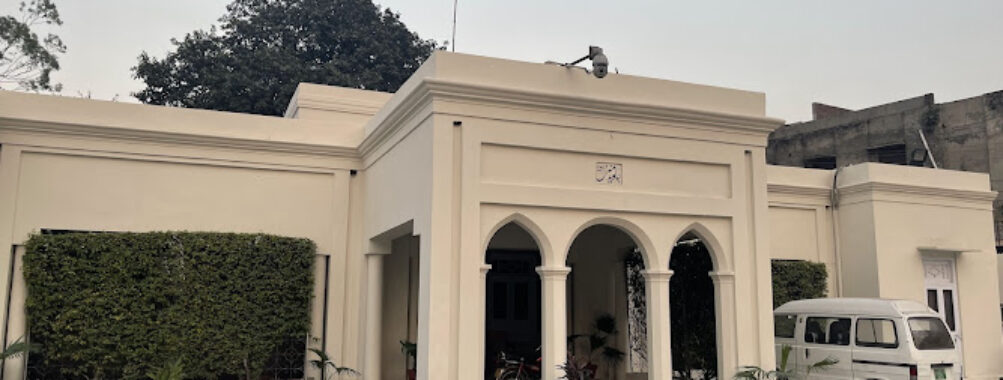
Iqbal Museum
Table of Contents
Description
The Iqbal Museum, also known as Javed Manzil, is one of those places in Lahore that quietly pulls you in with its aura of history. This was the final residence of Dr. Allama Muhammad Iqbal, the poet-philosopher who dreamed of Pakistan. Stepping inside feels less like entering a museum and more like walking into someone’s home, frozen in time. The rooms still hold his personal belongings—handwritten letters, manuscripts, his books, and even the furniture he once used. It’s not a flashy museum with high-tech displays, but that’s exactly what makes it so powerful. You feel a closeness to Iqbal, as if he just left the room a moment ago.
Visitors often describe the place as peaceful, though some admit it could benefit from better upkeep and more modern curation. And that’s fair—parts of the museum do feel a little old-fashioned. But honestly, that simplicity adds to its charm. Unlike overly polished tourist spots, this one feels authentic. It’s a place where you can sit quietly, reflect, and maybe even read a few lines of Iqbal’s poetry while imagining the world he envisioned. Families bring their children here to teach them about history, and travelers often leave with a sense of connection to the cultural soul of Pakistan.
Accessibility is thoughtfully considered. The entrance, parking, and restrooms are wheelchair-friendly, which is a big plus for many travelers. While you won’t find a restaurant on-site, basic amenities like restrooms are available, and the museum is generally welcoming to kids. It’s not a huge complex, so don’t expect to spend an entire day here, but an hour or two is enough to soak in the atmosphere and learn something meaningful.
Key Features
- Historic residence of Allama Iqbal, preserved as a national monument
- Personal belongings including manuscripts, letters, and furniture
- Peaceful environment ideal for reflection and learning
- Wheelchair accessible entrance, parking, and restrooms
- Family-friendly, with exhibits that spark curiosity in children
- Recognized as a Tentative UNESCO World Heritage site
Best Time to Visit
The museum is open year-round, but the best time to visit is during the cooler months from October to March. Lahore summers can be brutally hot, and while the museum is indoors, the overall experience feels far more pleasant when you’re not battling the heat. Weekdays are usually quieter, which means you can take your time exploring without the rush of weekend crowds. Early mornings are especially peaceful—almost like the building itself is waking up slowly, giving you the chance to wander in calm silence.
How to Get There
Getting to the Iqbal Museum is fairly straightforward if you’re already in Lahore. Most locals will know it by the name Javed Manzil, so if you’re taking a rickshaw or a ride-hailing service, just mention that. Public buses and taxis also pass nearby, but honestly, ride-hailing apps are the easiest option if you’re not familiar with the city. If you’re coming from the airport, it’s a manageable drive, usually under an hour depending on traffic. And yes, Lahore traffic can be unpredictable—sometimes you’ll zip through, other times you’ll wonder if the city has decided to hold a car parade just for you.
Tips for Visiting
First things first—don’t rush. This isn’t a museum you breeze through in ten minutes. Take your time to read the plaques, look at the handwriting in the letters, and imagine the life of the man who once sat in those rooms. If you’re traveling with kids, prepare them with a little background about Iqbal beforehand. It makes the visit more engaging when they can connect the dots between the exhibits and the stories they’ve heard.
Photography is usually allowed, but always double-check with the staff. And speaking of staff, they’re generally friendly and willing to share little nuggets of information if you ask. A small tip: bring a bottle of water with you, especially in warmer months, since there’s no café or restaurant on the premises. The museum doesn’t take long to explore, but pairing it with a walk around nearby areas can make for a fuller day out.
One personal piece of advice—don’t just look at the items. Pause and think about how Iqbal’s ideas shaped not only Pakistan but also the broader philosophical debates of his time. Whether you’re deeply familiar with his work or just hearing about him for the first time, the museum has a way of leaving you reflective. And maybe that’s the best souvenir you can take home from here: a quiet moment of thought, sparked by the legacy of a man who dreamed big.
Location
Places to Stay Near Iqbal Museum
Find and Book a Tour
Explore More Travel Guides
No reviews found! Be the first to review!